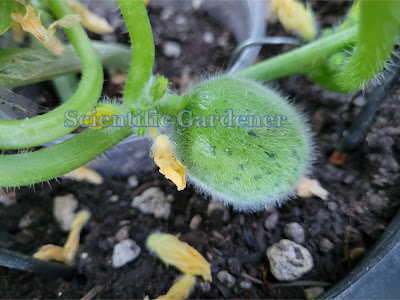Even though things don’t work out the way that we had planned, as we are open to the possibilities, we are often able to see our problems work out. One example of a problem working out for me was in growing the Martina Franca in the Raised Bed Garden. This was definitely not my first choice of places to grow. However, I was told that one of my cubic yard gardening bins needed to be moved on short notice. This made it so that my Martina Franca no longer had a place to grow. At the same time, I kept having major damage to my English cucumber variety at the raised garden. With the onslaught of pillbugs destroying my seedlings, and my dwindling supply of English cucumber seeds, I found that there would be ample space in the raised bed garden for the Martina Franca.
Thanks to the BioDiverso Puglia website, I knew about the Martina Franca for about a decade before I had the opportunity to grow the variety. I actually had a picture of the variety up on my wall for years, hoping that I would one day be able to grow it. I don’t know why opportunities happen, but when they do, I am grateful for them. The opportunity to recently acquire the Martina Franca from an Italian grower was a cherished moment for me. I continue to try to reach out to the gentleman who shared this variety with me to thank him for all that he shared with us.
The Martina Franca is a very vigorous variety for me. It grew extraordinarily well and quickly set a host of fruit near the base of the plant. The fruit is a beautiful color and texture and the flavor at picking stage makes it one of the best fruits that I have tried in a while. It continues to amaze me how many of the extremely rare caroselli (plural for carosello) produce very high quality fruit. It is a shame that the world is missing out on this gem of a cucumber.

When it finally came time to harvest the cucumbers, I noticed that the flowers looked like perfect hermaphrodite flowers and some of the fruit had low seed count or a high percentage of flat nonviable seed. This trait reminded me the Tondo di Galatina, which has parthenocarpic traits that can make it difficult to set seed. I decided to try growing the Martina Franca again soon, in order to find out if my observations about seed set may, in any way, be related to parthenocarpy in the variety.






































































